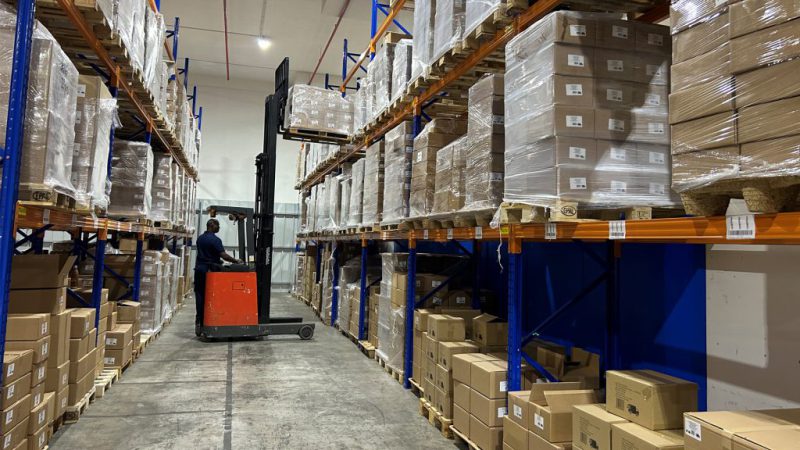Leading independent logistics operator Seabourne Logistics has opened its new warehouse in Birmingham in the UK as part of an aggressive expansion strategy to grow the business.
After a planning and construction period of several months, the 2000 square meter facility has been commissioned, strengthening Seabourne’s local capabilities significantly.
With large warehouse operations in the Netherlands and South Africa, as well as a smaller scale operation in Basingstoke in south-central England, the team is not new to the warehousing business, says Daniel Flitterman, Seabourne Group Managing Director. “Our move to expand our operations in the warehousing sector in the UK comes on the back of several developments. More importantly, it improves our efficiency to our clients, while expanding capacity and capability extensively.”
The new facility plays an integral role in servicing the company’s growing UK business. “The time was right to expand in Birmingham in the warehousing sector, particularly alongside our incredibly strong and experienced Freight business,” explains Mark Volante, Managing Director at Seabourne Forwarding. “It also allowed us to combine the operations of our Birmingham and East Midlands offices. The integration of the two teams at one premise, along with a new warehouse, offers our clients a range of additional benefits. It also reflects the continued expansion of our business.”
It will enable Seabourne to facilitate quicker and more efficient deliveries due to greater flexibility with stock-holding – a critical necessity following Brexit, that introduced tedious delays and additional costs on the movement of cargo to and from the European Union (EU).
“Before Brexit, we could move cargo across EU countries with no boundaries but due to the cost and paperwork involved, distribution has become more complex,” says Volante. “With this investment, we can streamline operations for clients distributing in the UK offering a flexible and efficient process that is less costly.”
The facility is particularly well suited for both small and large companies that need to be able to scale stock quickly. The geographical location of Birmingham is just as important, says Flitterman. “The city is the second largest in the UK and its central location makes it the ideal hub for logistics operations. For us, it ticked all the boxes, allowing us to get a stronger foothold in the warehousing industry in the country.”
The new warehouse, he says, is well-placed to provide integrated distribution services across the UK, including value-added capabilities like kitting and assembly, packing, and other innovative supply chain solutions. It also reduces the need for outsourcing to third-party service providers. Complying with strict security and environmental requirements and utilising a top-tier warehouse management system, it introduces several benefits to Seabourne’s UK operations – including reduced cost and total control of cargo.
With a range of old and new clients already on board, the facility has been welcomed by the industry and plans are already in place for expansion in the next few years.
“The experience and knowledge gained from our extensive operations in South Africa and the Netherlands stand us in good stead allowing us to build on that as we embark on this new journey in the UK. An important part of our strategy is to continuously expand our capacities and service portfolio to our customers,” adds Flitterman.
This includes growing its warehousing footprint in the UK – which will also see the facility in Basingstoke upgraded and expanded soon.
“In the planning and delivery of this building, it was important for us to create a facility that brings benefit to our customers. We pride ourselves on the personal relationships we build with our clients and the ability to create bespoke solutions that meet very different customer needs. This warehouse allows us to do all that. It offers our customers a range of services under one roof along with efficiency, flexibility and capacity,” concludes Flitterman.



